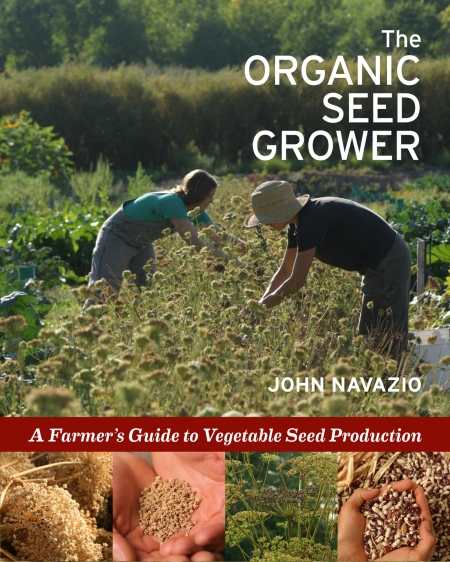The Organic Seed Grower
A Farmer's Guide to Vegetable Seed Production
As interest grows in sustainable agriculture practices, the need for organic seed is also on the rise. For a farm to be certified organic, the seed also has to be designated as such, but it’s not just those seeking or holding certifications who are leaning toward using this kind of seed. Gardeners, hobby farmers, community garden managers, and others are driving demand, particularly for heirloom vegetable varieties.
Although there are several commercial companies that offer organic seed for sale, smaller growers and hobbyists are finding enjoyment and affordability in “seed saving” for themselves. In this valuable, highly detailed exploration of the topic, John Navazio takes readers through the steps necessary to produce an organic seed crop, with best practices, a primer on crop plant biology, and tips on seed storage.
Navazio is well-versed in the topic as the senior scientist for the Organic Seed Alliance and a plant breeding and seed specialist for Washington State University Extension. Insightful and experienced, Navazio provides information in a straightforward, easy-to-follow manner.
After a fascinating stroll through the history of agricultural seed, he then covers vegetable families—such as alliaceae, brassicaceae, and cucurbitaceae—and their characteristics before delving into the details of particular vegetables, like leeks or lettuce. Even for those who don’t plan on seed saving, these chapters are stunning in their straightforward presentation of complex material, including soil and fertility requirements, growing methods, harvest, and genetic maintenance. As a farmer might say, every description is nutritionally dense.
Rounding out the information are several chapters on seed grower fundamentals, such as diseases, climate considerations, and varietal integrity. Throughout, Navazio attempts to present the information in a way that’s comprehensive but understandable, a balance he strikes easily. His work is vital for reclaiming some of the diversity we once had in our food supply, and which is currently under threat.
He writes, “In a very real sense, we have lost the diversity of people who know how to perform all the steps in this process, which isn’t about just growing the seed but also maintaining the variety, keeping it free of seedborne diseases, and harvesting and milling it to the point where it’s suitable for commercial use.”
Although the guide is most relevant to farmers who might want to sell seeds as part of a diversified small-farm operation, Navazio’s expertise will likely be fascinating to the backyard gardener as well. Much like other types of homesteading skills, seed saving can be something of an art, and, fortunately, Navazio is an expert teacher.
Reviewed by
Elizabeth Millard
Disclosure: This article is not an endorsement, but a review. The publisher of this book provided free copies of the book and paid a small fee to have their book reviewed by a professional reviewer. Foreword Reviews and Clarion Reviews make no guarantee that the publisher will receive a positive review. Foreword Magazine, Inc. is disclosing this in accordance with the Federal Trade Commission’s 16 CFR, Part 255.

